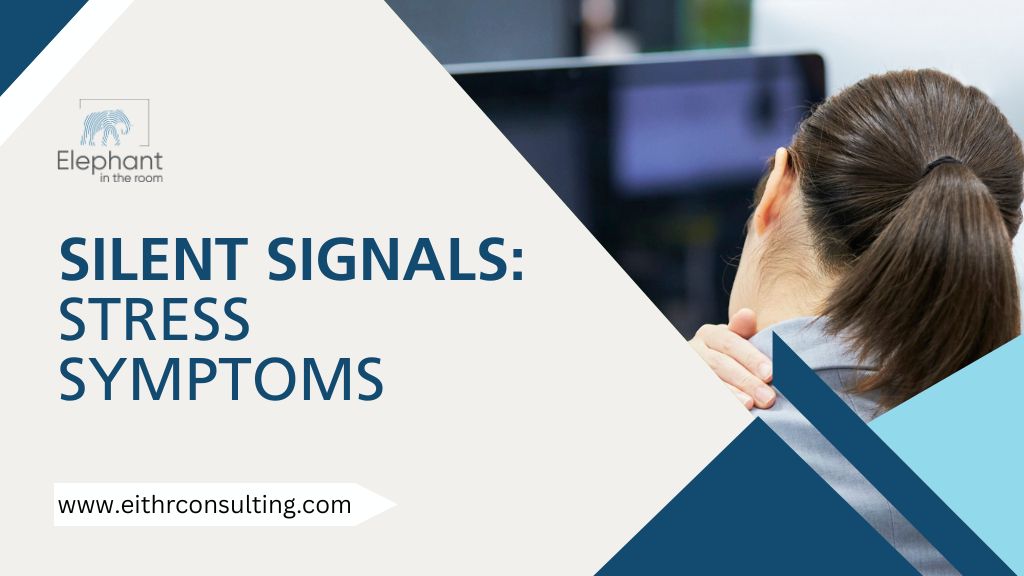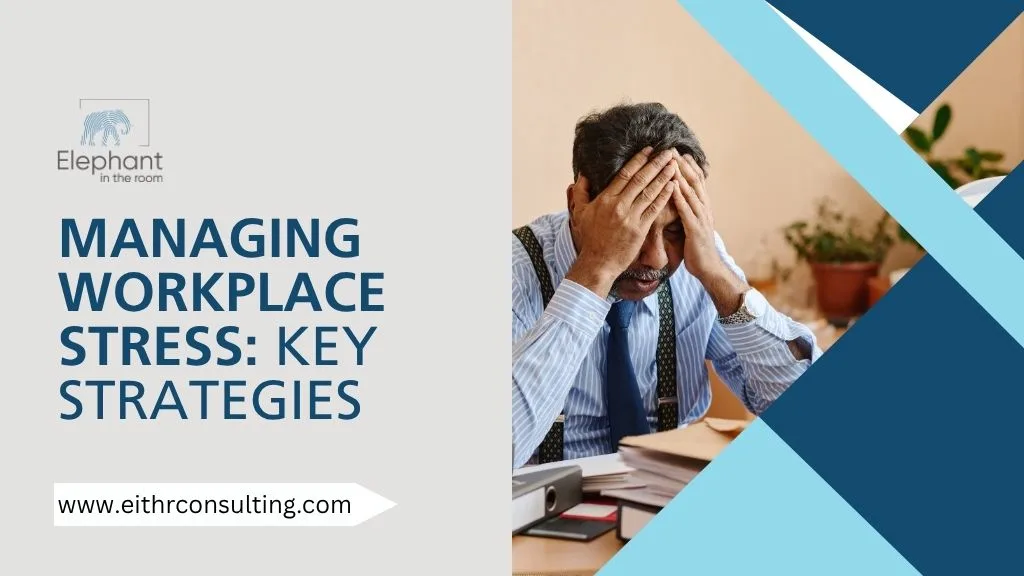Stress Doesn’t Always Shout Sometimes, It Whispers
Not all stress comes with flashing warning signs. In fact, some of the most damaging symptoms are the ones that go unnoticed the quiet fatigue, the subtle shifts in behavior, the gradual loss of focus.
In high-performing teams, these signals often get overlooked. But when left unaddressed, they compound, affecting employee well-being, team morale, and business outcomes. According to the American Institute of Stress, 83% of U.S. workers experience work-related stress, and more than half say it directly impacts their productivity.
For organizations that care about long-term performance, learning to recognize these signs and symptoms of stress is not optional it’s essential.
Here are 10 early symptoms of stress every manager and employee should keep on their radar.
1. Chronic Fatigue
When the body remains in a constant “fight-or-flight” mode, restful sleep isn’t enough. Employees may wake up exhausted, rely heavily on caffeine, or struggle to stay alert throughout the day. This isn’t just tiredness—it’s a physiological red flag.
2. Irritability and Mood Swings
Stress can amplify emotions. Employees may snap during meetings, withdraw from conversations, or display frustration that feels out of character. These changes often stem from stress simmering beneath the surface.
3. Difficulty Concentrating
When the brain is overloaded, focus and memory suffer. If employees are missing details, struggling with decision-making, or taking longer to complete tasks, stress may be disrupting cognitive function.
KEY TAKEAWAYS
- Why it matters: Subtle signs of stress like fatigue, irritability, and poor focus often go unnoticed but can impact morale, retention, and productivity.
- What to watch for: Early symptoms include sleep issues, mood swings, reduced productivity, and withdrawal from social interactions.
- How to respond: Normalise conversations, encourage small resets, and provide structured wellbeing support to prevent burnout and anxiety.
4. Unexplained Aches and Pains
Headaches, neck tension, tight shoulders, and back pain are common physical manifestations of stress. While they’re often dismissed as posture issues, they can actually be the body’s way of signaling emotional strain.
5. Changes in Eating Habits
Stress can swing appetite both ways. Some employees cope by overeating, while others skip meals entirely. Significant changes in eating behavior should be taken seriously as potential stress responses.
6. Sleep Disturbances
Stress often disrupts natural sleep cycles. Trouble falling asleep, waking frequently, or oversleeping are clear indicators that the mind and body aren’t recharging properly.
Stress Management Training for Your Team
Help your employees recognize and manage stress before it turns into burnout. Our expert-led Stress Management Training equips teams with tools to spot early signs, build resilience, and maintain productivity. Reach us at +91-9136130525 for a free consultation. (9am to 6pm IST, Mon–Fri)
7. Reduced Productivity
Employees may appear busy but achieve less. Stress lowers motivation and slows cognitive processing, leading to missed deadlines and decreased efficiency.
8. Avoidance or Procrastination
When stress makes work feel overwhelming, employees may delay tasks, avoid meetings, or lose initiative. This is often a sign of emotional fatigue rather than poor discipline.
9. Withdrawal from Social Interactions
Sudden disengagement from colleagues skipping team lunches, staying silent in discussions, or avoiding collaboration can signal emotional overload and stress withdrawal.
» Discover how employees can gain practical tools and strategies in 10 Techniques You’ll Learn in a Mental Wellbeing Workshop to manage stress and boost resilience.
10. Increased Reliance on Quick Fixes
Short-term coping mechanisms like excessive caffeine, smoking breaks, or weekend binge drinking often point to deeper unresolved stress issues.
👉 OUR TAKE: Stress often hides in subtle signs like fatigue, irritability, or lost focus. Organisations that act early through awareness, open conversations, and structured wellbeing support can prevent burnout, protect productivity, and build healthier teams.
Stress vs. Burnout vs. Anxiety — What’s the Difference?
- Stress: The body’s immediate response to demands or pressure.
- Burnout: The result of prolonged, unmanaged stress—leading to exhaustion and disengagement.
- Anxiety: Persistent worry and restlessness that often continues even when no stressor is present.
What Should You Do First if You Notice These Symptoms?
- Recognize the signs — Awareness is the first step to intervention.
- Encourage conversations — Normalizing discussions reduces stigma and isolation.
- Take small actions — Short breaks, breathwork, and boundary-setting can help immediately.
- Seek structured support — Training programs, workshops, or professional help ensure long-term change.
Time to Rethink Workplace Wellness
Stress isn’t an individual weakness; it’s a systemic workplace challenge. High stress affects morale, retention, and productivity, costing companies billions each year. By addressing stress proactively, organizations don’t just protect employees, they unlock stronger collaboration, sharper thinking, and sustainable performance.
Supporting Your Team the Right Way
At Elephant in the Room Consulting, we help organizations go beyond surface fixes. Through stress management training, wellbeing workshops, and tailored programs, we empower teams with tools to recognize, manage, and prevent stress.
Your people deserve more than quick fixes; they deserve strategies that help them thrive.
Frequently Asked Questions
What are the common symptoms of stress in the workplace?
They include fatigue, irritability, difficulty focusing, physical pain, changes in appetite, poor sleep, reduced productivity, and withdrawal.
How do I handle workplace stress effectively?
Encourage open dialogue, promote short resets (like breathwork), and provide systemic support through wellbeing programs.
How can I stop work stress from escalating?
Intervene early with awareness and tools. Left unchecked, stress grows into burnout or anxiety.
Stress vs. burnout vs. anxiety—what’s the difference?
Stress is immediate, burnout is prolonged exhaustion, and anxiety is persistent worry that often extends beyond external stressors.
What should I do first if I notice symptoms of stress?
Pause, acknowledge the signs, and take a small but intentional step, whether it’s resting, talking to someone, or seeking structured support.




